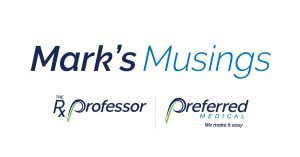
I was recently asked by a WorkCompCentral reporter (“Rise of the Robots: AI Can Read Adjuster, Doctor Notes to Score Claims’ Litigation Risk”, subscription required) about my opinion on the increasing use of technology in workers’ compensation. William Rabb included some of my quotes along with very useful input from Kevin Combes, a director and consultant at global risk management firm Aon and Pramod Akkarachittor, vice president of products for CLARA Analytics. But since he had finite space for his article, I decided to publish my full comments about the present / future. None of these are new initiatives, but COVID-19 has increased their importance and acceptance to where they are quickly becoming the “new normal.”
- More automation: While an overall decrease in the number of work comp claims has been underway for several years, COVID-19 has hastened that process due to historically high unemployment forced by a nationwide shutdown. Given less claims and less claims activity, carriers and TPAs and service providers have all had less to do, and in some cases decided to furlough employees (some permanently). That means an increase in automation, so more can be done with less, is one of the keys to survival.
- More self-service: This was coming long before COVID-19 but younger generation expectations for on-demand access to information doesn’t wait for a claims adjuster to call them back tomorrow. Self-service apps and websites with real-time claims information (current status on treatment decisions or when TTD or mileage reimbursement checks have been sent, for example), interactive correspondence (texts and instant messaging on portals beat e-Mails and voicemails) and a library of educational videos will be increasingly rolled out. Not only is this valuable to the consumer (injured worker and provider) but it also enables the integration of business rules through AI (artificial intelligence) for more consistency. Pull vs. Push interaction will increasingly side on the former.
- More virtual: Work from home has been successful by maintaining or even increasing productivity and encouraging more work / life balance (important to the younger generation, but in reality everybody). However, the isolation that comes from that is not as easy to manage and requires a heavier focus on people management and engagement. The net result is that many people forced home by shelter-in-place will remain at home. That has implications for how a business is run, how sales is conducted, the viability of conferences, business travel, real estate (i.e. empty offices that won’t have tenants) and manifold other “status quo” changers. Whatever business looked like in February 2019 is not what it will look like into the future.
- More telemedicine: That certainly seems like a no-brainer based on our collective personal experience over the past 5+ months. But the statistics bear out the trend – FAIR Health found that the use of telehealth increased by 4,347% from March 2019 to March 2020. CMS has already confirmed that the relaxation of regulations on telehealth for Medicare and Medicaid will likely become permanent and many states / work comp systems will probably follow that trend. While telemedicine will never completely replace in-person visits for some conditions / treatments, it will come close to that for others largely because of consumer demand. The key to its prominence will be statistics, likely published late 2020 / early 2021, that compares clinical outcomes between telemedicine and in-person during COVID-19. Unless there is a sizable negative difference, all indications are the switch in many areas will be permanent. Convenience and access will be king.
- More advocacy: Given the significant impact from unemployment, permanent business closures, and lack of human contact with at-risk people, the U.S. (and, frankly, the entire world) is getting a reintroduction to the importance of mental health and how quickly it can fade away even for those most resilient. That has been true in work comp, whether for employees of service providers thrust into a virtual environment or for injured workers that had gaps in care when “non-essential” medical treatment was outlawed by state and local governments. Work Comp does not change quickly and the recognition of the importance of an advocacy model has been evolving over several years. However, it has now become personal, and that will drive faster adoption. An advocacy model that focuses on the whole-person (including mental health) is now not just a nice-to-have but a requirement and expectation.
Of course, I could be wrong about all of this. Others will certainly have different opinions. But anyone who thinks life will return to how it was pre-COVID has not been paying attention. Evolve or die.
Mark Pew, The RxProfessor, Educator and Agitator
